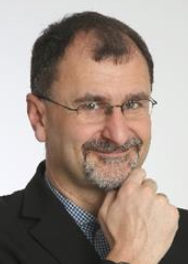Accelerating the Development of New Semiconductors with Automated Research Lines
Christoph J. Brabec1,2,3
1Institute of Materials for Electronics and Energy Technology (i-MEET), Department of Materials Science and Engineering, FAU, Martensstrasse 7, 91058 Erlangen, Germany
2Helmholtz-Institute Erlangen-Nürnberg (HI ERN), Forschungszentrum Jülich , Immerwahrstrasse 2a, 91058 Erlangen, Germany
3Zernike Institute, University of Groningen, Groningen, Netherlands
EXTENDED ABSTRACT: The development of complex semiconductors poses a multi-objective optimization problem in a large multi-dimensional parameter space. Solving it requires reproducible, user-independent laboratory work and intelligent preselection of experiments. This is specifical the situation for solution processed semiconductors, a field of experimental materials science where manual routines are still predominant, Contrarily to that that, other domains like pharmacy or chemistry have introduced robotics and automation long before. Materials Acceleration Platforms (MAPs) are regarded as an enabling technology for Big Data Material Approaches, leading to an increased number of concepts and a dynamic evolution of MAP lines. In this talk, I will present our approach to laboratory automation in materials science with a strong focus on solution processed semiconductor innovation, like perovskites or organics. AMANDA (Autonomous Materials and Device Application Platform - LineOne -www.amanda-platform.com) was developed as a generic platform for distributed materials research comprising a self-developed software backbone and several MAPs specifically designed to produce and characterize solution-processed thin-film devices like organic solar cells or perovskite solar cells. The unprecedented data quality of AMADNA, in combination with Gaussian Process regression (GPR), allowed us to identify hidden process-functionality correlations which are not accessible with other methods. In between, Line One has gained predictive power for the performance and stability of photovoltaic devices. In the next step, Bayesian Optimization will be implemented in order to transform LineOne into an autonomously acting MAP for solar cell device optimization.

Christoph J. Brabec received his PhD (1995) from Linz University, Austria. After a postdoc period under Serdar Sariciftci and Alan Heeger, he joined the SIEMENS research labs (project leader) in 2001, Konarka in 2004 (CTO), Erlangen University (full professor) in 2009, ZAE Bayern e.V. (scientific director, board member) in 2010, Interdisciplinary Center for Nanostructured Films (spokesman) in 2013, honorary professor on time at the university of Groningen (2018 - 2023) and director at FZ Jülich (IEK-11) in 2018. His research interests include all aspects of solution processing organic, hybrid and inorganics semiconductor devices with a focus on photovoltaics and renewable energy systems. He has published over 700 articles and 100 patents which received about 80.000 citations.